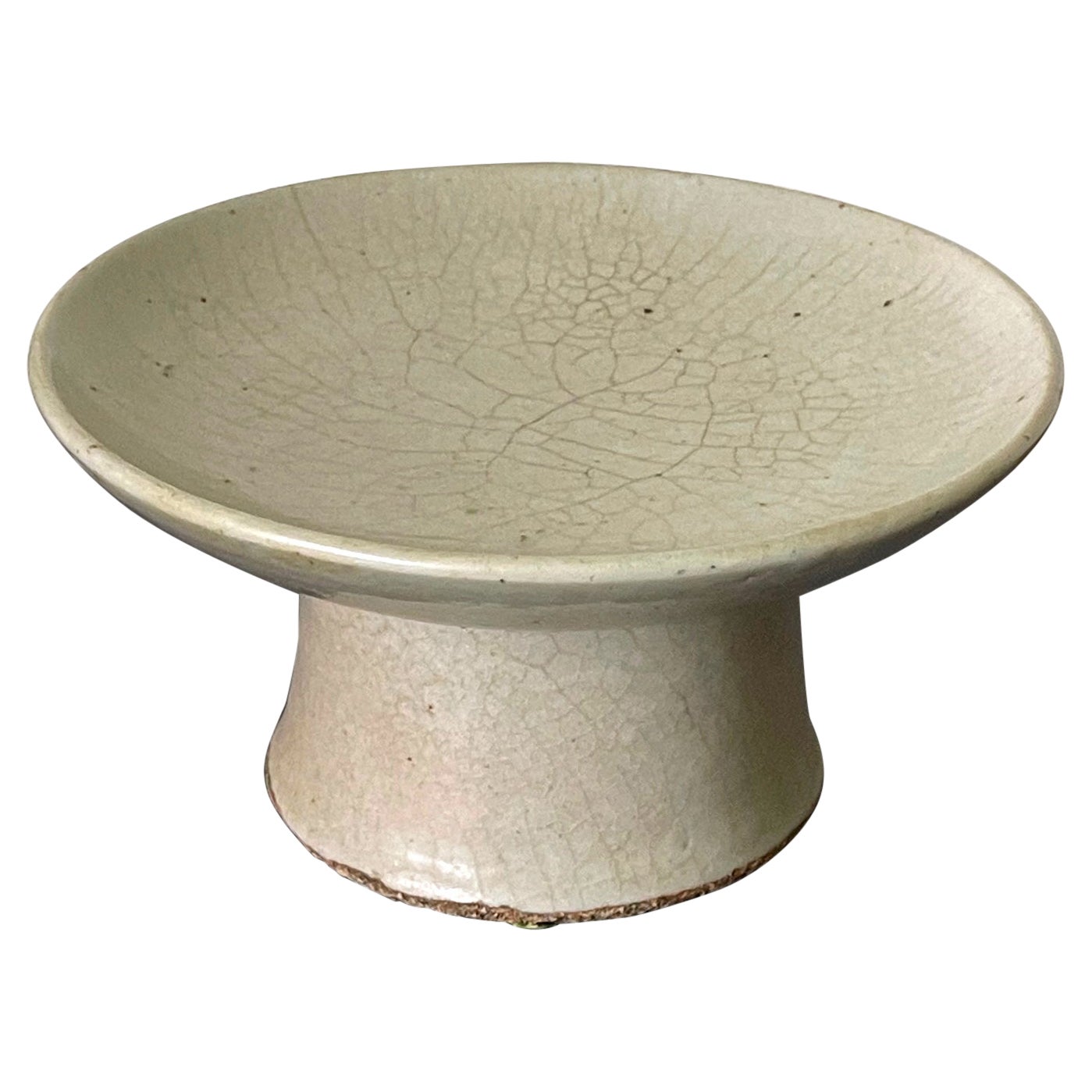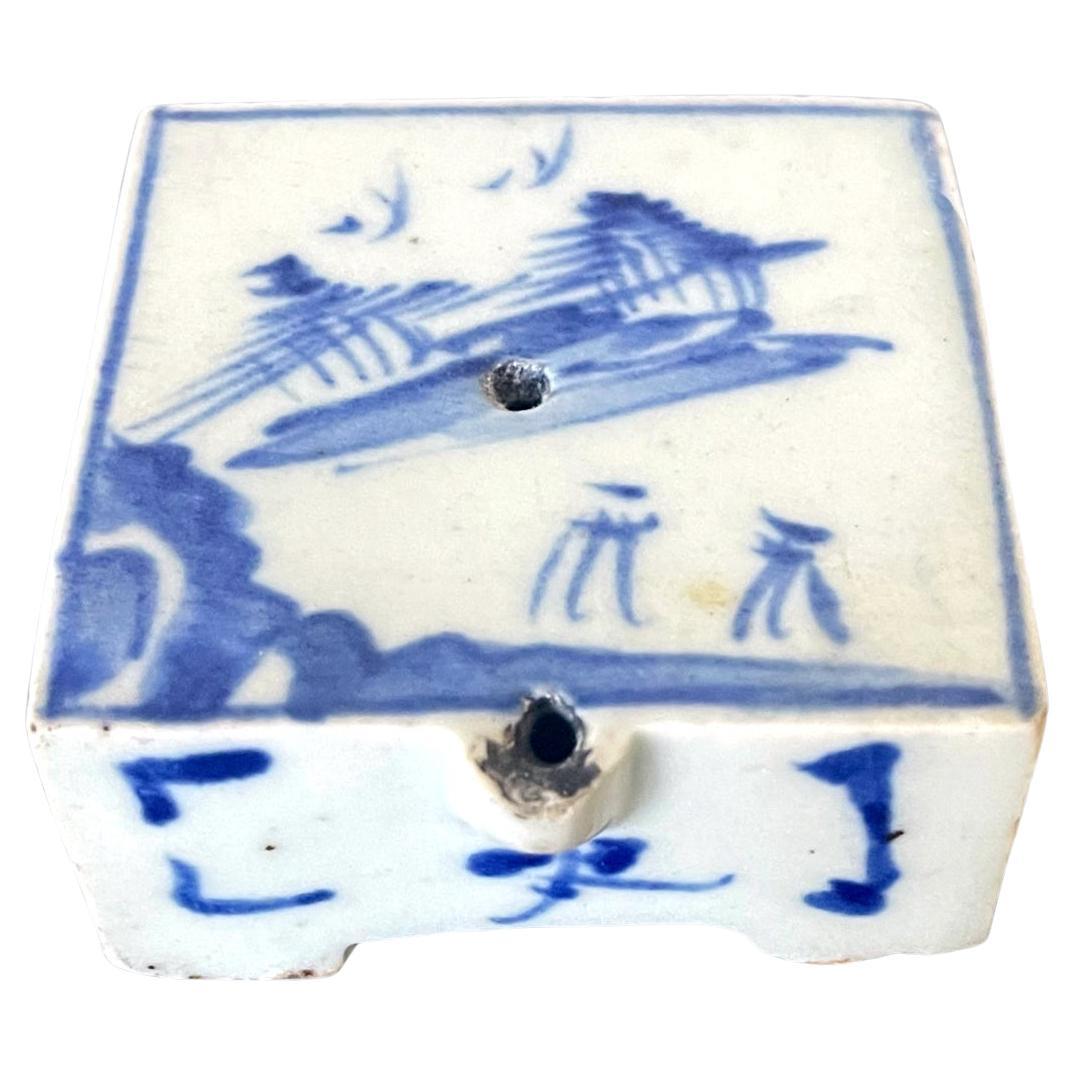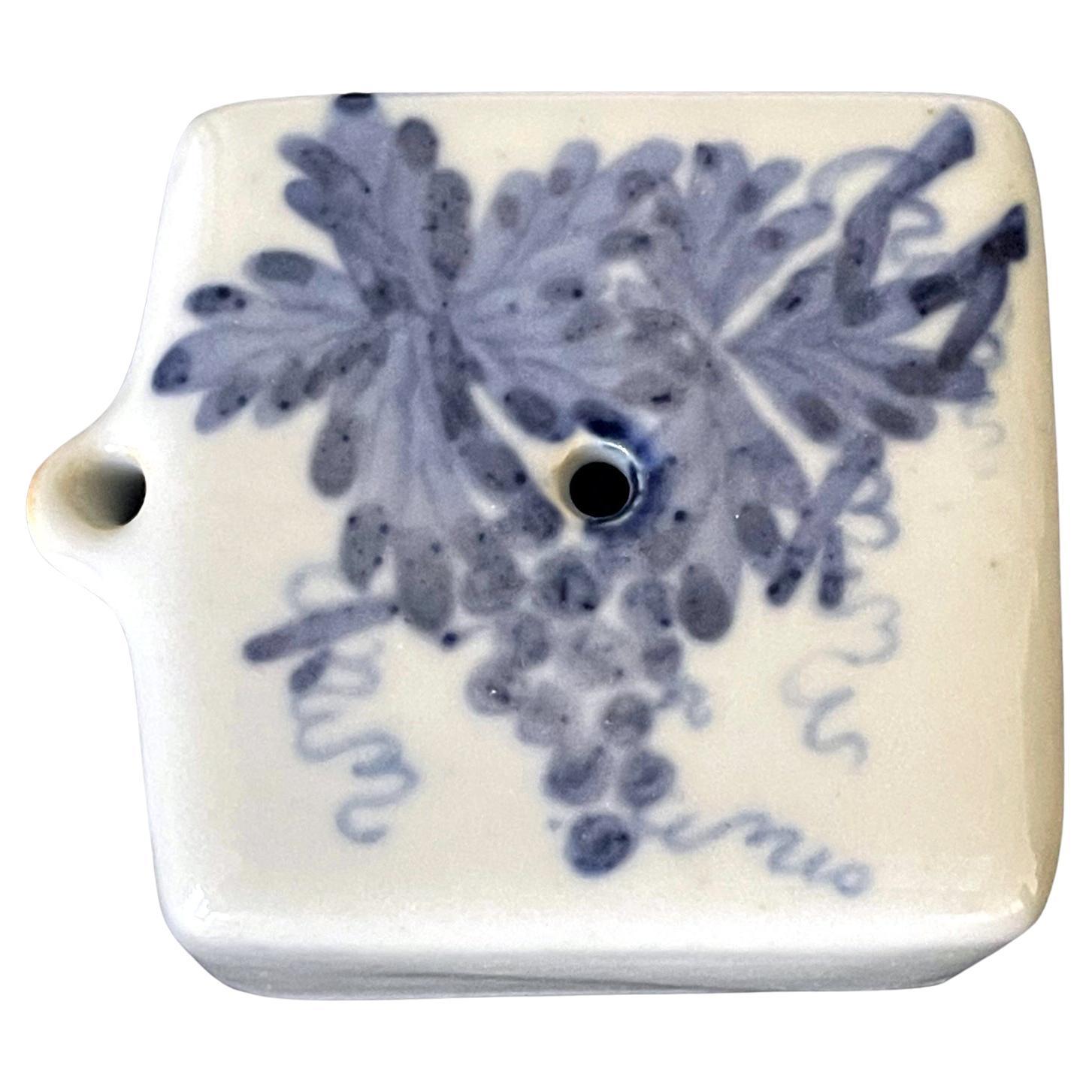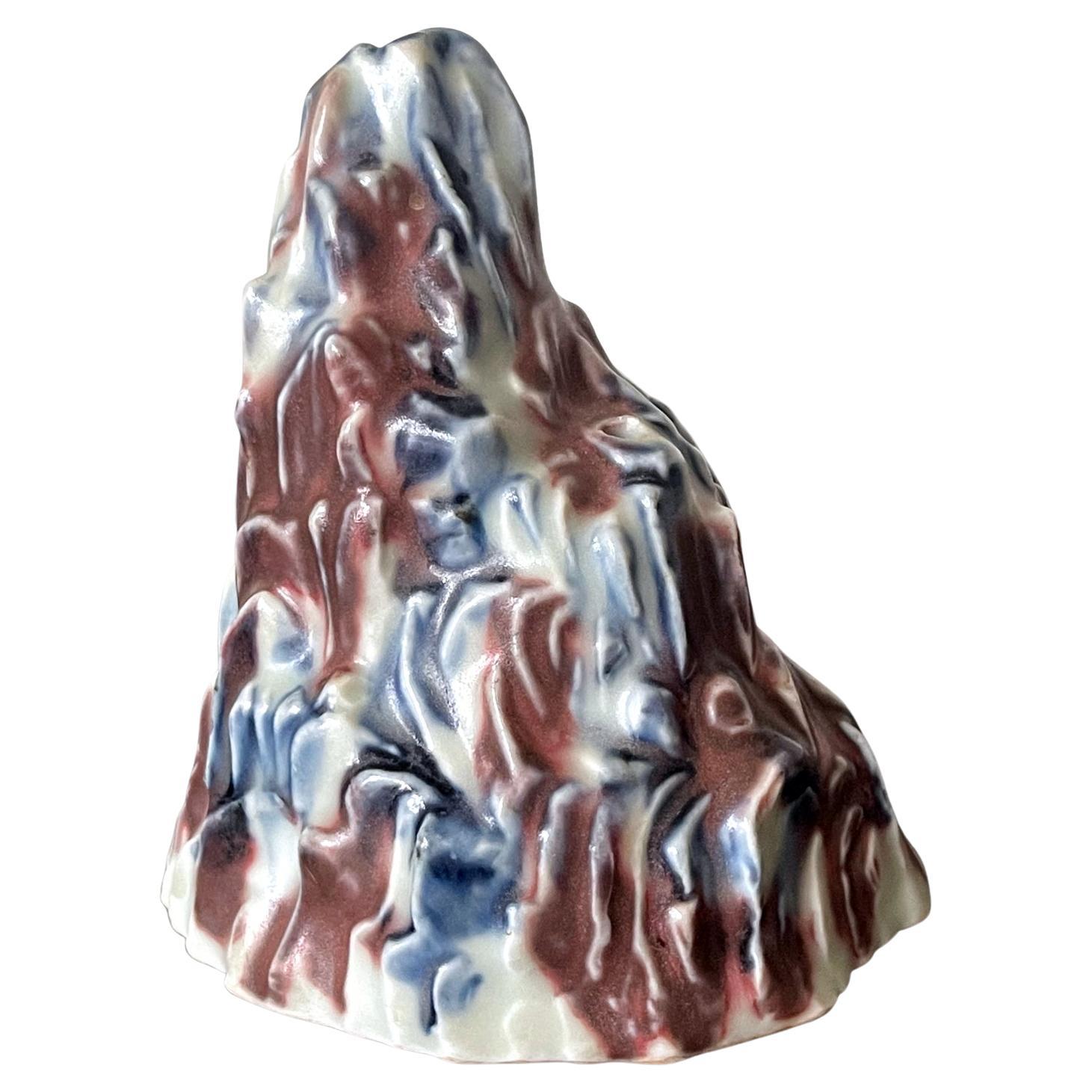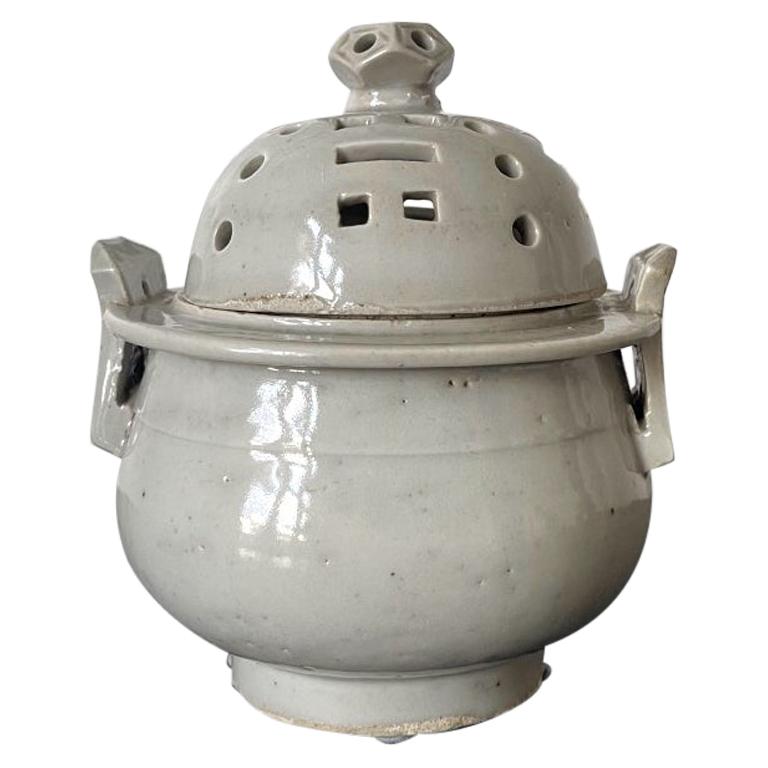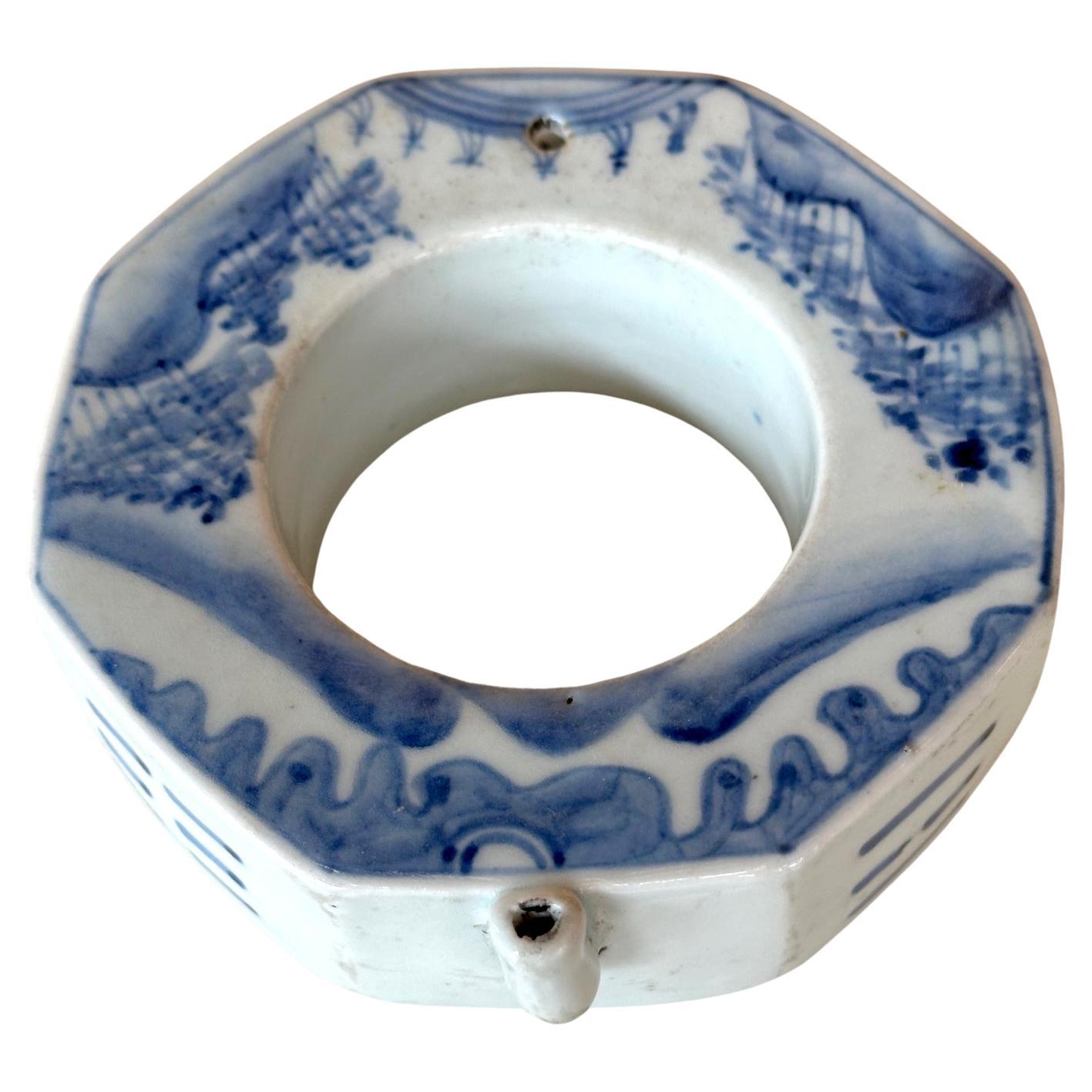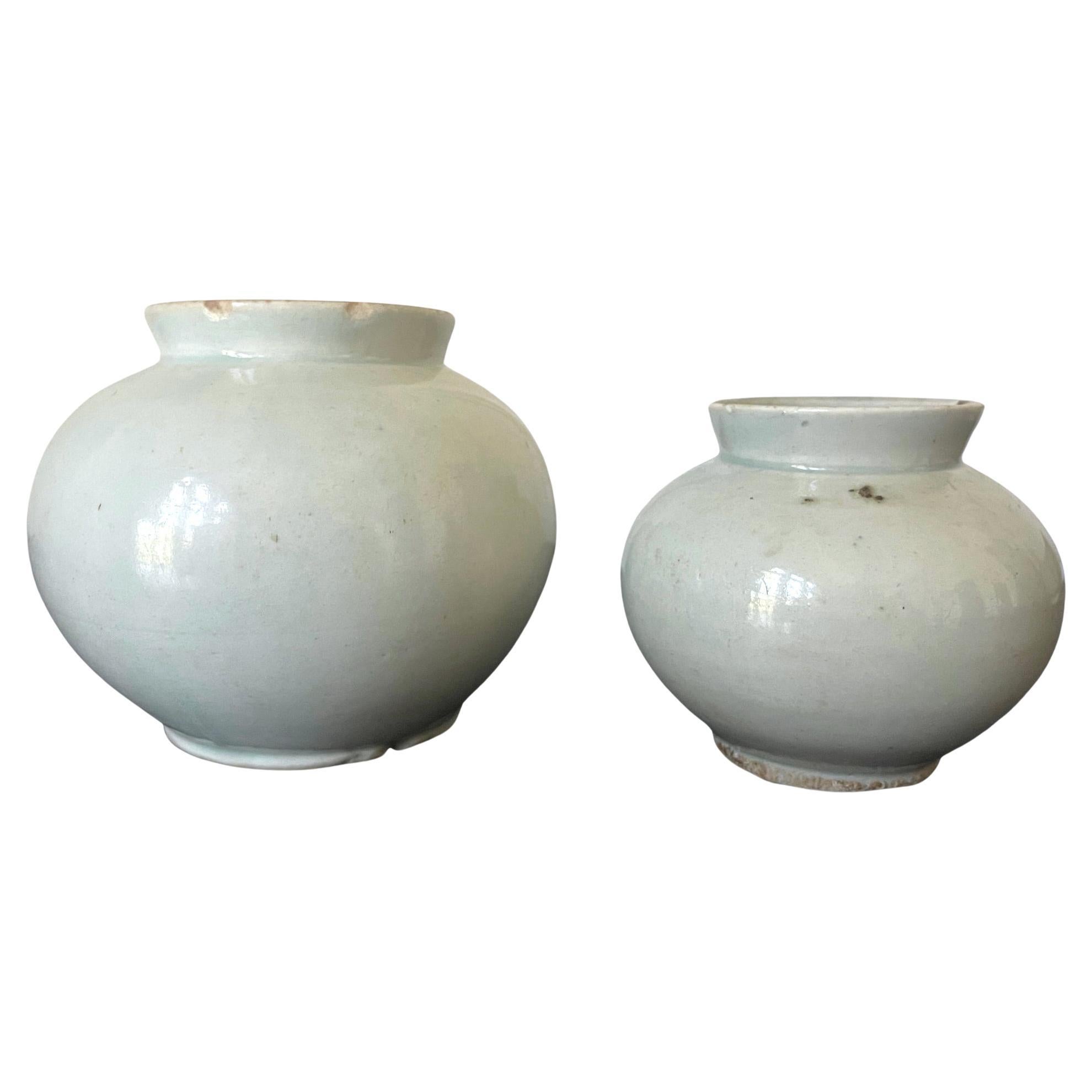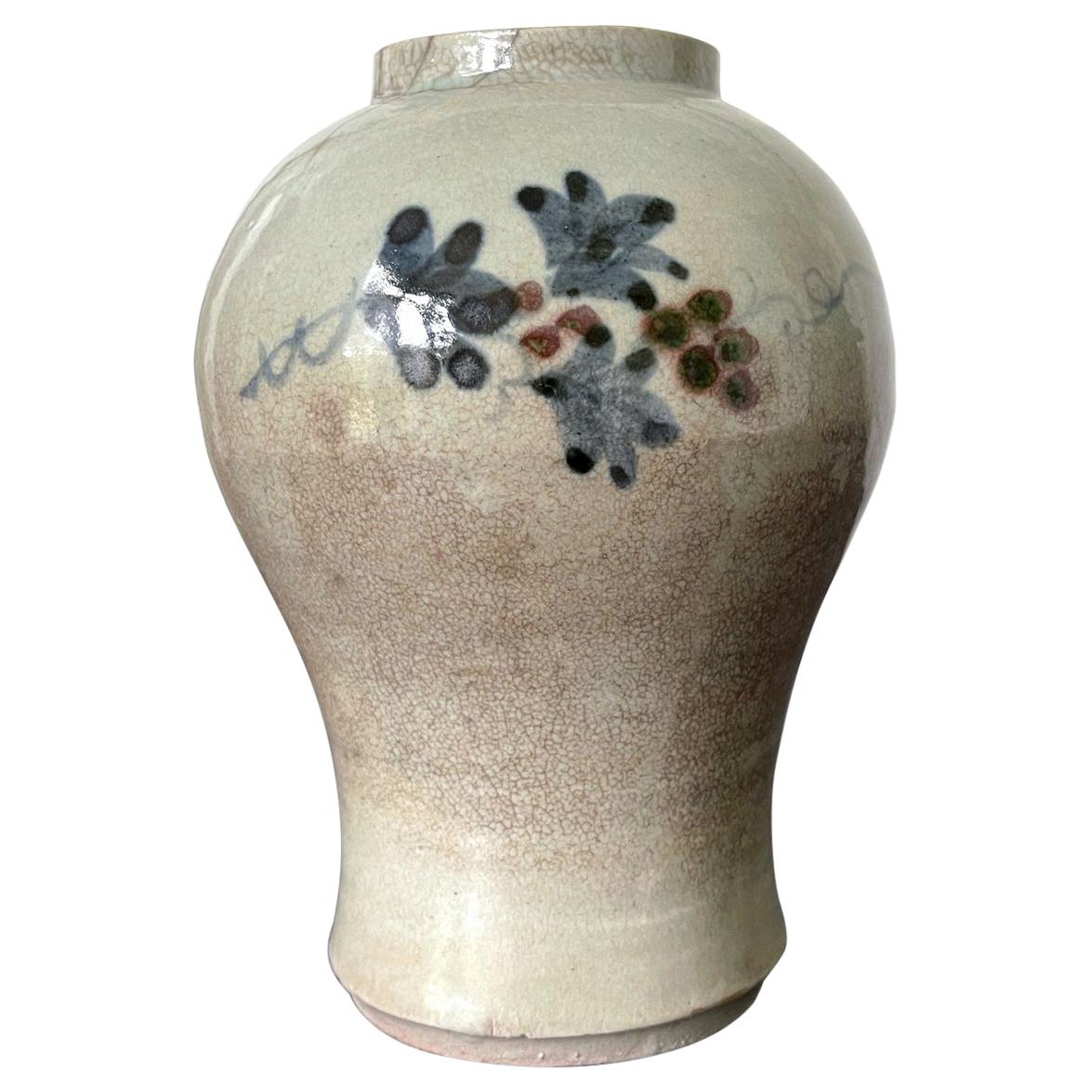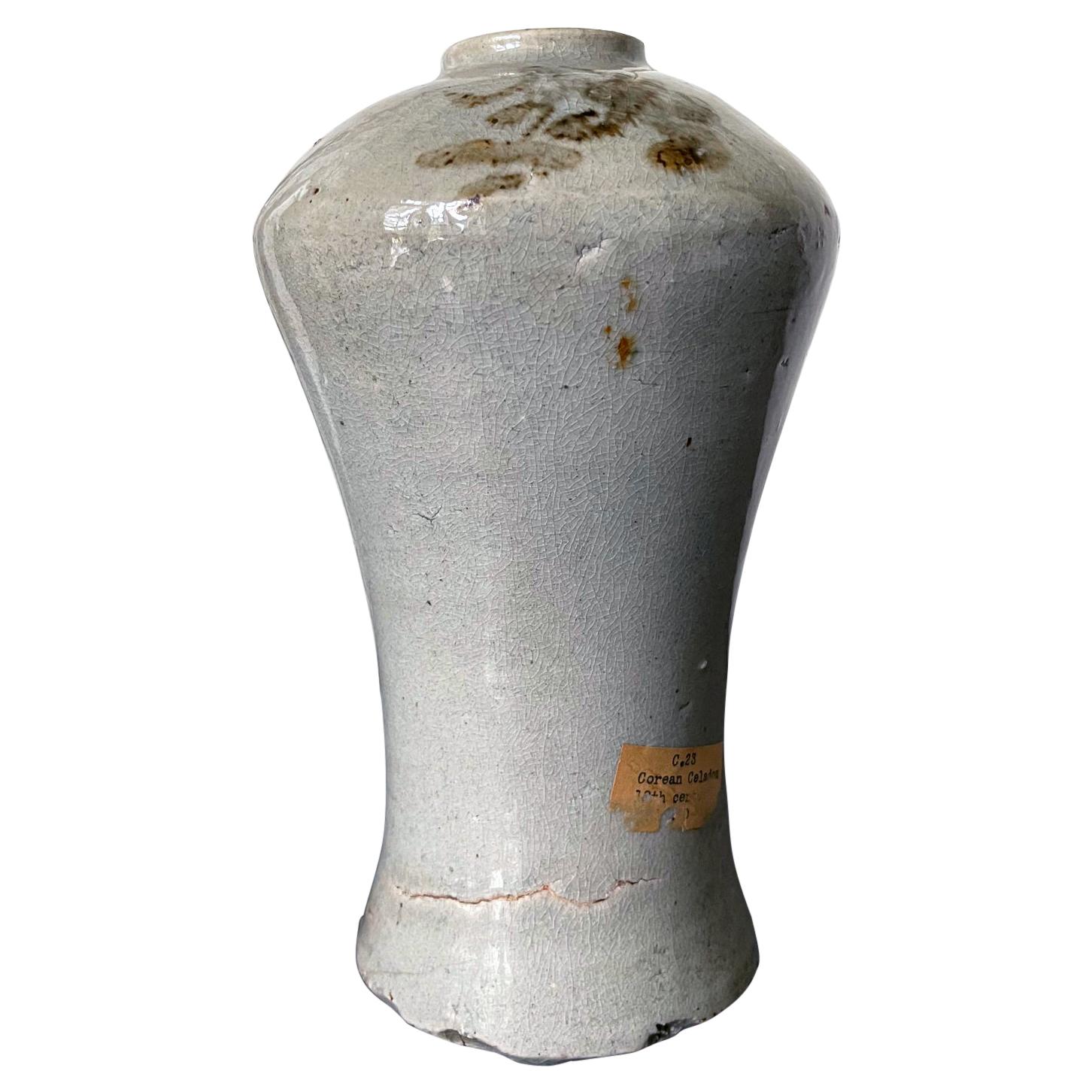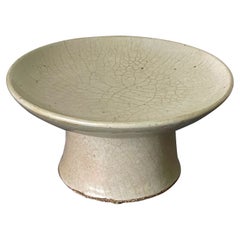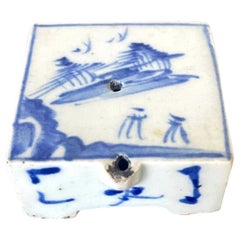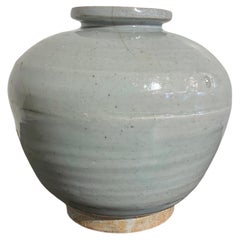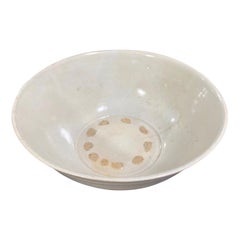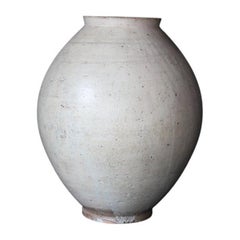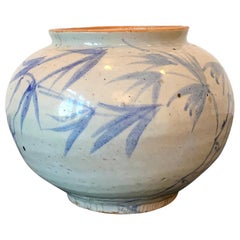
Korean Blue and White Ceramic Jar Joseon Dynasty
View Similar Items
Want more images or videos?
Request additional images or videos from the seller
1 of 19
Korean Blue and White Ceramic Jar Joseon Dynasty
About the Item
- Dimensions:Height: 5 in (12.7 cm)Diameter: 7 in (17.78 cm)
- Materials and Techniques:
- Place of Origin:
- Period:
- Date of Manufacture:19th Century
- Condition:Wear consistent with age and use. Surface wear and patina, kiln imperfection such as specks, glaze cracks on the base, both in and out and on the mouth rim.
- Seller Location:Atlanta, GA
- Reference Number:1stDibs: LU945021410042
About the Seller
5.0
Platinum Seller
These expertly vetted sellers are 1stDibs' most experienced sellers and are rated highest by our customers.
Established in 2006
1stDibs seller since 2010
478 sales on 1stDibs
More From This SellerView All
- Korean White Ceramic Stem Dish Joseon DynastyLocated in Atlanta, GAA ceramic dish with high cylindrical foot in white glaze from Korea, circa 19th century Joseon Dynasty. By shape, this piece is most likely a ceremonial vessel that was used to make offerings on the altar. Although without inscription, we can't rule out that it could be a household item for occasions that were less formal. Such as a private shrine in the household. During Joseon dynasty, the social morals were largely centered on the principles of Confucianism that originated from China. Many ritual ceramic wares were produced for rituals and worships on all level of the society. The ware were often modeled after the archaic bronze ware that elevated them from the aesthetic of daily use pieces. High foot dish like this were made in both round and square shape to suite different use but they were all distinguished with the inscription for their exclusive ceremonial purpose. Of elegant form and harmonious proportion, this stem dish...Category
Antique 19th Century Korean Archaistic Ceramics
MaterialsCeramic
- Korean Ceramic Water Dropper Joseon DynastyLocated in Atlanta, GAA small Korean ceramic water dropper in square form on four corner feet, circa 19th century late Joseon Dynasty. The piece features an underglaze blue pa...Category
Antique 19th Century Korean Ceramics
MaterialsCeramic
- Korean Ceramic Water Dropper Joseon DynastyLocated in Atlanta, GAA small Korean ceramic water dropper in square form circa 19th century late Joseon Dynasty. It features an underglaze blue painting of a full cluster of ...Category
Antique 19th Century Korean Ming Ceramics
MaterialsCeramic
- Korean Ceramic Water Dropper in Dog Form Joseon DynastyLocated in Atlanta, GAA lovely Korean ceramic water dropper in the form of a sitting dog circa 19th century late Joseon Dynasty. The charming animal form features underglaze blue paint outlining the furs ...Category
Antique 19th Century Korean Ceramics
MaterialsCeramic
- Korean Ceramic Water dropper in Mountain Form Joseon DynastyLocated in Atlanta, GAA Korean ceramic water dropper in the shape of a mountain from late Joseon Dynasty circa 1850-1900s. The lovely piece takes a shape of a rugged mountain peak with crags and furrows, ...Category
Antique Late 19th Century Korean Other Ceramics
MaterialsCeramic
- Korean Ceramic Ritual Offering Vessel with Inscription Joseon DynastyLocated in Atlanta, GAA ceramic dish with high cylindrical foot in white glaze with a cobalt blue underglaze inscription from Korea, circa 18-19th century Joseon Dynasty. This is a classic ceremonial vess...Category
Antique Late 18th Century Korean Archaistic Ceramics
MaterialsCeramic
You May Also Like
- Korean White Glazed Jar, Joseon Dynasty, 18th Century, KoreaLocated in Austin, TXA sublime Korean white glazed porcelain globular jar, Joseon Dynasty, 18th century, Korea. The squat jar is heavily potted, with a globular body, very short neck, and wide mouth r...Category
Antique 18th Century Korean Ceramics
MaterialsPorcelain
- Korean Joseon Dynasty White Glazed Pottery Ceramic Chawan Tea BowlLocated in Studio City, CAA wonderful Joseon Dynasty (1392-1897) Korean pottery bowl - perhaps a monk's Chawan tea bowl. The work features a beautiful white glaze, wonderful organic shape, engaging design and...Category
Antique 19th Century Korean Ceramics
MaterialsCeramic, Earthenware, Pottery
- Moon Jar / Korean Antique vase / Joseon Dynasty / 18th CenturyLocated in Kyoto-shi, KyotoIt's a wonderful moon jar. It is a rare size that is suitable for the alcove of a Japanese tea room. It is shaped at once without connecting the uppe...Category
Antique 18th Century Korean Antiquities
MaterialsCeramic
- Korean Buncheong Joseon Dynasty Glazed Pottery Ceramic Calligraphy VaseLocated in Studio City, CAA beautifully glazed and colored, hand-decorated Korean Buncheong vase. Joseon Dynasty (1392-1910). Very nice patina. We are listing it as 19th cent...Category
Antique 19th Century Korean Ceramics
MaterialsEarthenware
- Moon Jar 'Dalhanari', Lot3 / 17th Century / Korean Antiques / Joseon DynastyLocated in Kyoto-shi, KyotoThis is a white porcelain jar from the mid-Joseon period, also known as a "Talhunari" or "moon jar". During the Joseon Dynasty, which was strongly influenced by Confucianism, the purity of white porcelain was particularly prized in its artistic expression due to its Confucian sensitivity. The defining characteristic of white porcelain during this period was its pure white color, but there were many subtle variations in the white hues, with some being classified as milky white, snowy white, ashen white, and bluish white. The term "Talhunari" means "moon jar" in Korean, and it refers to the large, round shape of the jar, resembling a full moon. It was named by Kim Whanki, a representative abstract painter of Korea. The soft, curving lines and sturdy body that seems to embrace the full moon give the jar both power and tranquility. This type of jar was produced in large quantities during the 17th century. The white of the moon jar is not the pure white of early Joseon porcelain...Category
Antique 17th Century Korean Ceramics
MaterialsCeramic, Porcelain
- Moon Jar 'Dalhanari' - Lot2 / 17th Century / Korean Antiques / Joseon DynastyLocated in Kyoto-shi, KyotoThis is a white porcelain jar from the mid-Joseon period, also known as a "Talhunari" or "moon jar". During the Joseon Dynasty, which was strongly influenced by Confucianism, the purity of white porcelain was particularly prized in its artistic expression due to its Confucian sensitivity. The defining characteristic of white porcelain during this period was its pure white color, but there were many subtle variations in the white hues, with some being classified as milky white, snowy white, ashen white, and bluish white. The term "Talhunari" means "moon jar" in Korean, and it refers to the large, round shape of the jar, resembling a full moon. It was named by Kim Whanki, a representative abstract painter of Korea. The soft, curving lines and sturdy body that seems to embrace the full moon give the jar both power and tranquility. This type of jar was produced in large quantities during the 17th century. The white of the moon jar is not the pure white of early Joseon porcelain...Category
Antique 17th Century Korean Antiquities
MaterialsCeramic, Porcelain
Recently Viewed
View AllMore Ways To Browse
White Ceramic Base
Blue And White Ceramic
Ceramic Jar
Blue White Ceramic Hands
19th Century Blue And White Ceramics
Blue Dynasty
Antique Ceramic Jars
Antique Ceramic Jar
Antique Blue Jars
Blue Lips
White Ceramic Jar
White Ceramic Jars
Antique Korean Korea
Antique Korean
Antique Korea
Korean Antique
Korea Antique
Antique Korean Furniture
